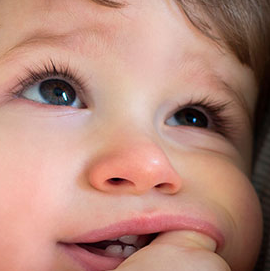What are Bohn's Nodules?
Bohn's nodules are a variety of tiny cystic structures that can be seen on the lateral palate, lingual, or buccal sides of the alveolar ridges. These lesions are prevalent, affecting up to 85 percent of newborns. Bohn's nodules are speculated to originate from either a remnant of the dental lamina or salivary gland epithelium. Some researchers disagree with the second idea, saying that mucinous glands are not often found on the sides of the alveolar ridges. Since shedding or involution happens on its own most of the time, therapy is not needed. The majority of Bohn's nodules do not require additional testing.
Bohn's Nodules Definition
Bohn's nodules are keratin cysts originating from remnants of odontogenic epithelium above the dental lamina, or they may be remnants of small salivary glands. They can be seen on the alveolar ridge, however, they are found on the maxillary bone more frequently than the mandibular.
Bohn's Nodules Symptoms
Bohn's nodules are harmless and painless cysts in a newborn's mouth that are typically found on the palate. Symptoms of Bohn's nodules in newborns include a bump or lump in the mouth, painless lesions, and a visible cyst on the palate. The lesions may also cause difficulty with latching during breastfeeding. Treatment is generally not necessary as the nodules should resolve on their own, however, a pediatrician or dentist should be consulted if the nodules persist or cause irritation.

Bohn's Nodules Causes
The development of Bohn's nodules is linked to the hypothesis that epithelium becomes trapped during palate growth, resulting in the formation of cystic material. Alternately, other ideas propose that the palate develops simultaneously with the epithelial remnants of the small salivary glands of the palate, which may result in the production of these inclusion cysts in the newborn.
Bohn's Nodules Treatment
Bohn's nodules are benign and go away on their own after a few weeks or months, therefore no treatment is required. Some specialists advise gently massaging the affected area with a digital massage to help them resolve, while others believe that any treatment is ineffective or even harmful.
The following are some home remedies that you could try:
- Warm compresses should be applied to the affected area three times a day for a total of 15 minutes each time.
- Ibuprofen or acetaminophen are types of pain relievers that can be purchased without a prescription and given to your child.
- Make sure your child is dressed comfortably.
Bohn's Nodules vs. Epstein Pearls
In 1880, a Czech doctor named Alois Epstein published the first description of the gingival cyst. Another form of the cyst was first described by German doctor Heinrich Bohn in 1886. In 1967, Alfred Fromm developed a system for categorizing gingival cysts. According to him, gingival cysts that occur in infants can be further categorized as Epstein's pearls, Bohn's nodules, or dental lamina cysts depending on the unique origin of the tissues.
Oral inclusion cysts are classified as Epstein pearls when present on the mid-palatine raphe or at the junction of the hard and soft palate and are categorized as Bohn nodules when placed on the vestibular or lingual face of the alveolar ridge, and as gingival cysts when located on the alveolar ridge crest.







0 Comments
For comments please reply here.......